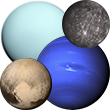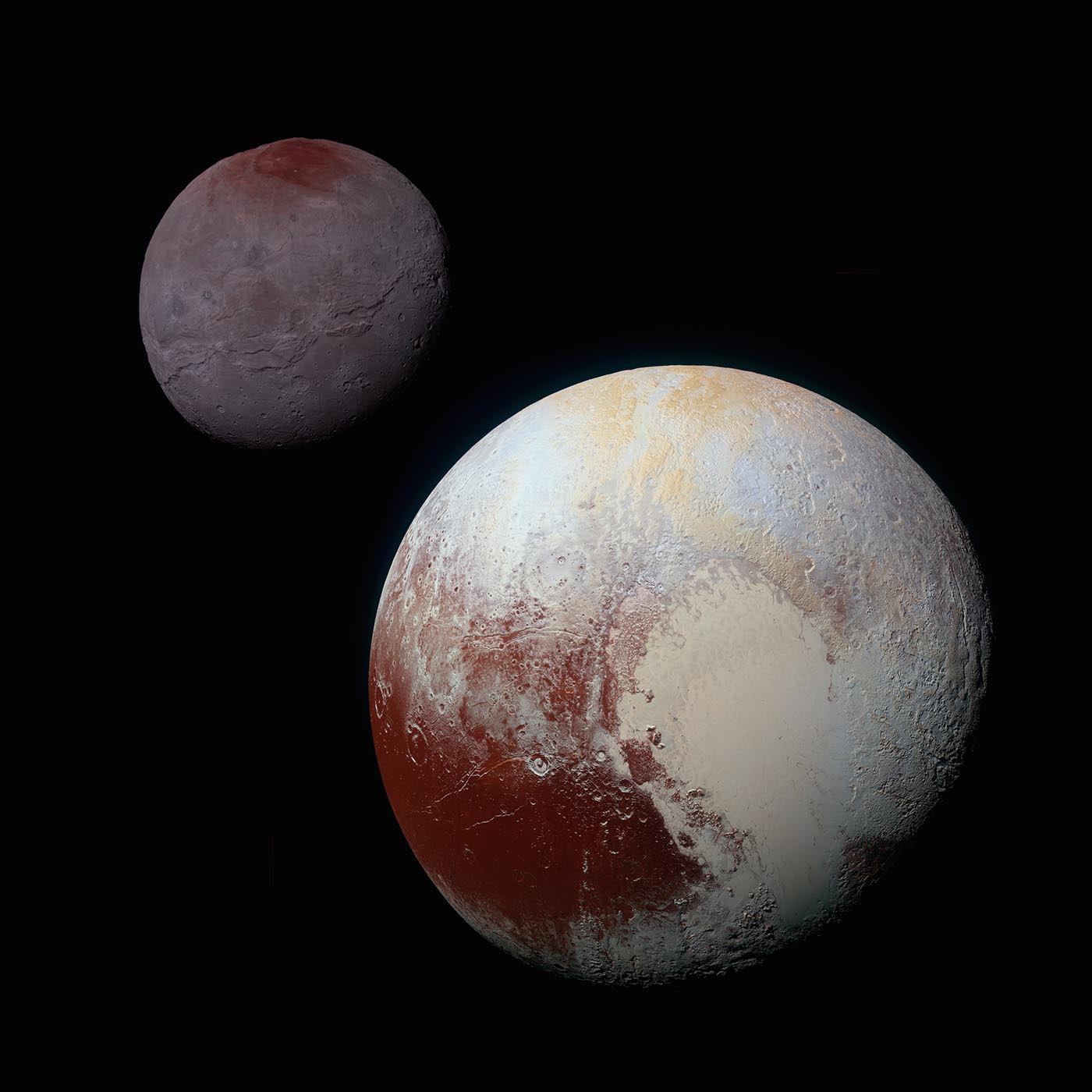Rough Notes:
Pluto
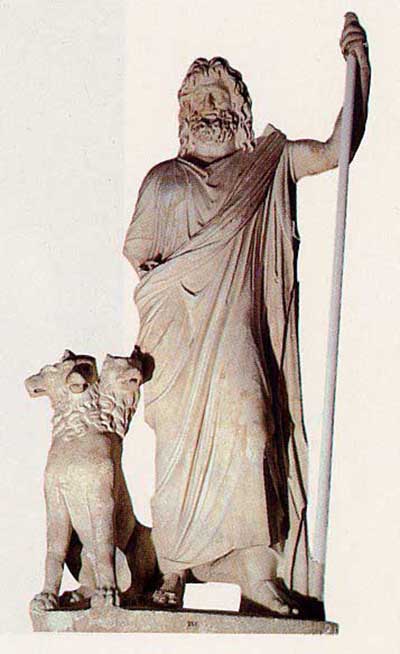
Pluto was the Roman god of the underworld and the judge of the dead. Pluto is an alternative name for the Greek god Hades, but was more often used in Roman mythology in their presentation of the god of the underworld. He abducted Proserpina (Gr. Persephone), and her mother Ceres (Gr. Demeter) who then caused winter in her grief.
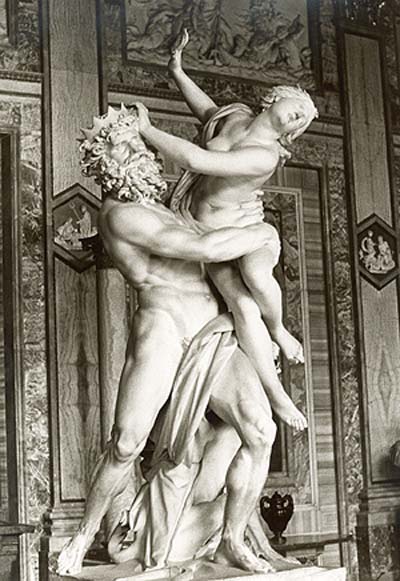
The best-known myth involving Pluto or Hades is the abduction of Persephone, also known as Kore ("the Maiden"). The earliest literary versions of the myth are a brief mention in Hesiod's Theogony and the extended narrative of the Homeric Hymn to Demeter; in both these works, the ruler of the underworld is named as Hades ("the Hidden One"). Hades is an unsympathetic figure, and Persephone's unwillingness is emphasized.
Increased usage of the name Plouton in religious inscriptions and literary texts reflects the influence of the Eleusinian Mysteries, which treated Pluto and Persephone as a divine couple who received initiates in the afterlife; as such, Pluto was disassociated from the "violent abductor" of Kore. Two early works that give the abductor god's name as Pluto are the Greek mythography traditionally known as the Library of "Apollodorus" (1st century BC)[30] and the Latin Fables of Hyginus (ca. 64 BC-AD 17).
The most influential version of the abduction myth is that of Ovid (d. 17 or 18 AD), who tells the story in both the Metamorphoses (Book 5) and the Fasti (Book 4). Another major retelling, also in Latin, is the long unfinished poem De raptu Proserpinae of Claudian (d. 404 AD). Ovid uses the name Dis, not Pluto in these two passages, and Claudian uses Pluto only once; translators and editors, however, sometimes supply the more familiar "Pluto" when other epithets appear in the source text.
The abduction myth was a popular subject for Greek and Roman art, and recurs throughout Western art and literature, where the name "Pluto" becomes common (see Pluto in Western art and literature below). Narrative details from Ovid and Claudian influence these later versions in which the abductor is named as Pluto, especially the role of Venus and Cupid in manipulating Pluto with love and desire. Throughout the Middle Ages and Renaissance, and certainly by the time of Natale Conti's influential Mythologiae (1567), the traditions pertaining to the various rulers of the classical underworld coalesced into a single mythology that made few if any distinctions among Hades, Pluto, Dis, and Orcus.
Pluto was originally not the god of the underworld. Pluto is cognate with the Greek word "Ploutos" (wealth, cf. plutocracy), and, under the original name Plutus, was considered by the Romans as the giver of gold, silver, and other subterranean substances. Because these "gifts" were mined, Pluto became recognized as the god of the physical underworld, which in turn helped him become recognized as the god of the spiritual underworld and thus death. This brought about his mythological relationship to the Greek god Hades. Because the mythology of these gods is more known than the actual religious roles of the gods, Pluto is identified as the counterpart to the Greek Hades (which is only true in mythology).
The dwarf planet Pluto is named after him.
Pluto, although related, should not be confused with the Greek god Plutus, the god of wealth.
"Plutonic Theory", the idea that the earth was formed due to intense heat in the earth, stems from Pluto, the opposing theory of which is the Neptunian Theory which states that the formation of the earth was caused by the agency of water.
Offspring
Unlike his freely procreating brothers Zeus and Poseidon, Pluto is monogamous, and is rarely said to have children. In Orphic texts, the chthonic nymph Melinoe is the daughter of Persephone by Zeus disguised as Pluto, and the Eumenides ("The Kindly Ones") are the offspring of Persephone and Zeus Chthonios, often identified as Pluto.
The Augustan poet Virgil says that Pluto is the father of Allecto the Fury, whom he hates. The lack of a clear distinction between Pluto and "chthonic Zeus" confuses the question of whether in some traditions, now obscure, Persephone bore children to her husband. In the late 4th century, Claudian's epic on the abduction motivates Pluto with a desire for children. The poem is unfinished, however, and anything Claudian may have known of these traditions is lost.
Justin Martyr (2nd century AD) alludes to children of Pluto, but neither names nor enumerates them. Hesychius (5th century) mentions a "son of Pluto." In his 14th-century mythography, Boccaccio records a tradition in which Pluto was the father of the divine personification Veneratio ("Reverence"), noting that she had no mother because Proserpina (the Latin name of Persephone) was sterile.
In The Faerie Queene (1590s), Edmund Spenser invents a daughter for Pluto whom he calls Lucifera. The character's name was taken from the 16th-century mythography of Natale Conti, who used it as the Latin translation of Greek phosphor, "light-bearer," a regular epithet of Hecate. Spenser incorporated aspects of the mysteries into The Faerie Queene.
Pluto and Orpheus
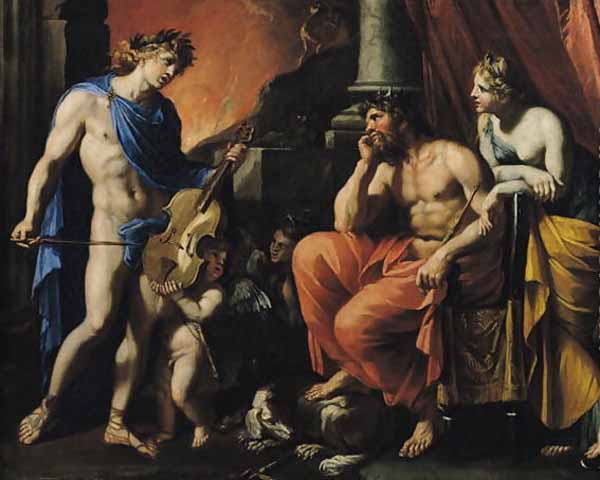
Orpheus was regarded as a founder and prophet of the mysteries called "Orphic," "Dionysiac," or "Bacchic." Mythologized for his ability to entrance even animals and trees with his music, he was also credited in antiquity with the authorship of the lyrics that have survived as the Orphic Hymns, among them a hymn to Pluto. Orpheus's voice and lyre-playing represented a medium of revelation or higher knowledge for the mystery cults.
In his central myth, Orpheus visits the underworld in the hope of retrieving his bride, Eurydice, relying on the power of his music to charm the king and queen of Hades. Greek narratives of Orpheus's descent and performance typically name the ruler of the underworld as Plouton, as for instance in the Bibliotheca. The myth demonstrates the importance of Pluto "the Rich" as the possessor of a quest-object. Orpheus performing before Pluto and Persephone was a common subject of ancient and later Western literature and art, and one of the most significant mythological themes of the classical tradition.
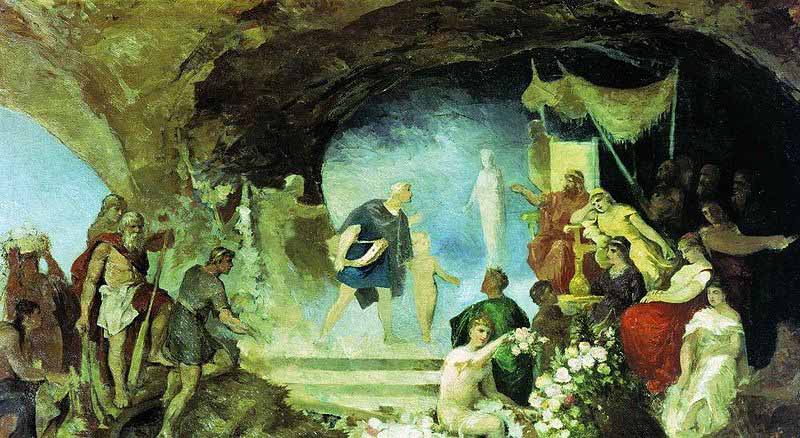
The Greek writer Lucian (ca. 125-after 180 AD) suggests that Pluto's love for his wife gave the ruler of the underworld a special sympathy or insight into lovers parted by death. In one of Lucian's Dialogues of the Dead, Pluto questions Protesilaus, the first Greek hero killed in the Trojan War, who wishes to return to the world of the living. "You are then in love with life?" Pluto asks. "Such lovers we have here in plenty; but they love an object, which none of them can obtain." Protesilaus explains, as a sort of reverse Orpheus, that he has left behind a young bride whose memory even the Lethe's waters of forgetting have not erased from him. Pluto assures him that death will reunite them someday, but Protesilaus argues that Pluto himself should understand love and its impatience, and reminds the king of his grant to Orpheus and to Alcestis, who took her husband's place in death and then was permitted at the insistence of Heracles to return to him. When Persephone intercedes for the dead warrior, Pluto grants the request at once, though allowing only one day for the reunion.
Magic Invocations
The names of both Hades and Pluto appear also in the Greek Magical Papyri and curse tablets, with Hades usually referring to the underworld as a place, and Pluto regularly invoked as the partner of Persephone.
Five Latin curse tablets from Rome, dating to the mid-1st century BC, promise Persephone and Pluto an offering of "dates, figs, and a black pig" if the curse is fulfilled by the desired deadline. The pig was a characteristic animal sacrifice to chthonic deities, whose victims were typically black or dark in color.
A set of curse tablets written in Doric Greek and found in a tomb addresses a Pasianax, "Lord to All," sometimes taken as a title of Pluto, but more recently thought to be a magical name for the corpse. Pasianax is found elsewhere as an epithet of Zeus, or in the tablets may invoke a daimon like Abrasax.
Sanctuaries of Pluto
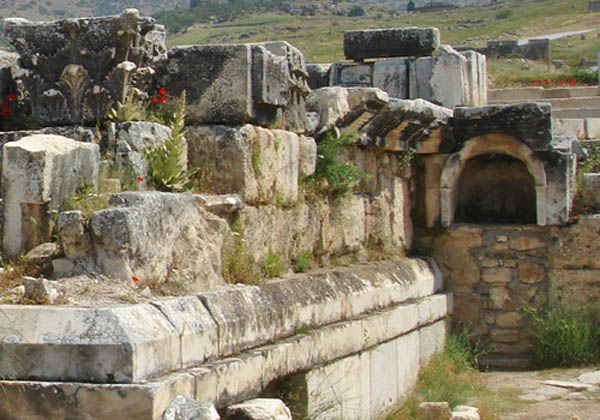
A sanctuary dedicated to Pluto was called a plutonion. The complex at Eleusis for the mysteries had a plutonion (underground cavern) regarded as the birthplace of the divine child Plutos, in another instance of conflation or close association of the two gods.
Greek inscriptions record an altar of Pluto, which was to be "plastered", that is, resurfaced for a new round of sacrifices at Eleusis. One of the known plutonia was in the sacred grove between Tralleis and Nysa, where a temple of Pluto and Persephone was located. Visitors sought healing and dream oracles.
The plutonion at Hierapolis, Phrygia, was connected to the rites of Cybele, but during the Roman Imperial era was subsumed by the cult of Apollo, as confirmed by archaeological investigations during the 1960s. It too was a dream oracle. The sites often seem to have been chosen because the presence of naturally occurring mephitic vapors was thought to indicate an opening to the underworld. In Italy, Avernus was considered an entrance to the underworld that produced toxic vapors, but Strabo seems not to think that it was a plutonion.
The Helmet of Invisibility
The Bibliotheca of Pseudo-Apollodorus uses the name Plouton instead of Hades in relating the tripartite division of sovereignty, the abduction of Persephone, and the visit of Orpheus to the underworld. This version of the theogony for the most part follows Hesiod, but adds that the three brothers were each given a gift by the Cyclopes to use in their battle against the Titans: Zeus thunder and lightning; Poseidon a trident; and Pluto a helmet.
The helmet Pluto receives is presumably the magical Cap of Invisibility but the Bibliotheca is the only ancient source that explicitly says it belonged to Pluto. The verbal play of aidos, "invisible," and Hades is thought to account for this attribution of the helmet to the ruler of the underworld, since no ancient narratives record his use or possession of it.
Later authors such as Rabelais (16th century) do attribute the helmet to Pluto. Erasmus calls it the "helmet of Orcus" and gives it as a figure of speech referring to those who conceal their true nature by a cunning device. Francis Bacon notes the proverbial usage: "the helmet of Pluto, which maketh the politic man go invisible, is secrecy in the counsel, and celerity in the execution."
New Horizons Examines Pluto
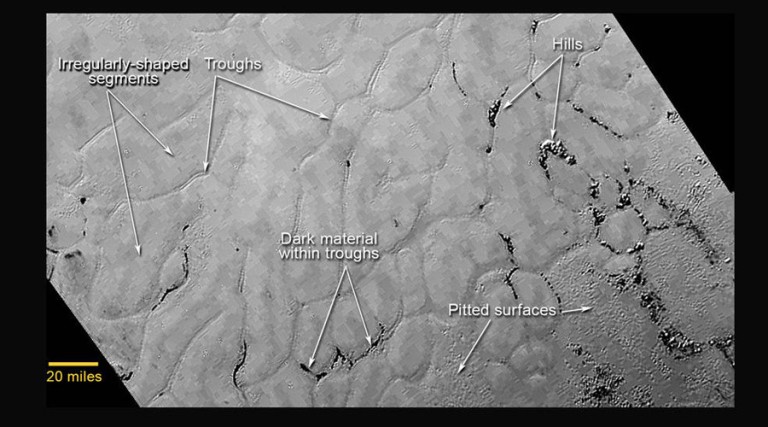
NASA photo: “Not-easy-to-explain terrain.”
New Horizons Examines Pluto
By Andrew Hall
LORRI Photos Suggest Powerful Electric Discharges Swept Surface
Look at these traces of rilles winding the surface of Pluto. We’ve seen this on Mercury, the moon and Mars. We’ve seen it on the moons of Saturn. Now we see them on Pluto and its largest moon Charon.
What would cause these? Planetary scientists with the New Horizon’s project theorize it is because Pluto has a water ice core that has been seismically active in the recent past.
The New Horizon’s team acknowledges this surface looks very similar to surfaces seen on Mars, where they attribute the polygonal structures to be caused by subsurface lava tubes that have collapsed.
The assumption Pluto has a water ice core requires a different explanation for its rille features. On Pluto, it is believed these twelve mile wide polygons are either convection cells, presumably frozen into the surface as the planet cooled, or they are the consequence of contraction stresses as the surface shrank, analogous to the polygonal cracks in dried mud.
Many rilles also exhibit circular craters that seem to appear in clusters along the path of the rille. New Horizons also photographed the same features on Pluto’s largest moon Charon.
According to New Horizons researcher John Moore, “When you look at this plain you can see a vast, craterless plain with some strange story to tell.” He added that he first thought the only way to describe the plain was as “not-easy-to-explain terrain”.
The Electric Universe provides a different theory for these features and many other observations we can see in the earliest photos streaming from Pluto. The rilles appear to be “breakdown” channels from high-energy electrical discharge events.
Other features found on Pluto have the New Horizons team giddy with wonder and astonishment, since these features are a complete surprise.
The Electric Universe wonders at the New Horizons team’s surprise since these features are consistent with the features of other rocky planetary bodies we look at.
Let’s take a look at other features discovered by New Horizons:
- Pluto’s surface is red, very similar to the appearance of Mars.
- Tombaugh Reggio, as named by the team, is the distinctive heart shaped region of flat pain where the rilles appear. Other photos of the region show clusters of hills, surrounded by flat plain. Parts of the plain show mounds. More data streaming in should determine the size and shape of the mounds.
- Adjacent to the flat plain in the southern hemisphere are eleven thousand foot mountains.
- New Horizon scientists theorize these are composed of bedrock water ice, tectonically up-thrust from the water-ice core. The surprising elevation on such a small body implies they are structurally solid bedrock ice with a coating of nitrogen ice deposited by winds.
- Dark streaks several miles long appear to be deposits that researchers think is wind blown dust or perhaps evidence of past geyser activity.
- There is a huge concentration of carbon monoxide within the Tombaugh Reggio. No other concentrations of carbon monoxide appear across the surface. Elsewhere are deposits of nitrogen and methane ice.
- There are few craters and some areas are almost completely without craters, which is an unexpected find that suggests to the researchers Pluto was formed within the last 100 million years. Since Pluto is not close enough to another large body for tidal forces to create tectonics, it is now thought Pluto may have been hot and active in the recent past due to internal stresses.
- Pluto has an atmosphere that reaches a thousand miles into space. Spectrographic analysis indicates a mixture of nitrogen and hydrocarbon sandwiched between molecular nitrogen in the upper atmosphere and hydrocarbon at the surface.
- A tail of ionized nitrogen plasma blows in the solar wind from Pluto, extending 68,000 miles into space. New Horizons team estimated this tail is the result of solar winds stripping as much as 500 tons per hour of Pluto’s atmosphere. This is far more energetic than anything they expected to find. Mars was found to have a plasma tail carrying an estimated 1-ton per hour of material, in spite of its proximity to the sun.
Pluto has five moons: Charon, Hydra, Nix, Kerberos and Styx. The largest, Charon was also photographed with the LORRI camera revealing similar rilles, plains, canyons and mountains. Significant features are,
- A large dark spot, named “Mordor” by the team, appears to be a thin veneer, surrounded by a reddish outer ring.
- A series of troughs and cliffs extending six thousand miles across the surface.
- Polygonal shapes.
- Vast smooth areas without craters.
- A long linear canyon estimated to be four to six miles deep.
- Another canyon 3 miles deep.
- No highly cratered surface as expected.
The New Horizons team and NASA have done a spectacular job in getting this data. The successful LORRI CCD camera is providing long-range detail with amazingly high resolution.
The findings are somewhat baffling to the team, however. As stated by John Moore on the New Horizons research team, “These are the early days of the post-encounter analysis. We’re still entertaining, as you can tell, the widest range of hypotheses. We are acutely aware that jumping to conclusions comes at great peril.”
Unfortunately, they are already jumping to conclusions, trying to explain Pluto’s features with standard model ideas. The New Horizon team may wish to expand their horizons a bit further than they do now if they want answers. They will find these features explained – even laboratory demonstrated by the EU Theory if they dare to look.
As more pictures and data comes in, we suspect there will be more similarities to the features of Mars and our moon, and few features that match the standard model.
For more information on Pluto, see New Horizons Update: Pluto and Planetary Origins| Space News with Wal Thornhill posted July 24, 2015.
Andrew Hall is an engineer and writer, who spent thirty years in the energy industry. He can be reached at [email protected] or https://andrewdhall.wordpress.com/


